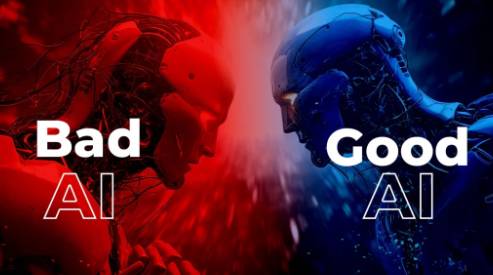The Unburdening: How Technology is Inviting Us to Reclaim the Soul of Our Work
In the relentless hum of today’s discourse, the rise of advanced technology, particularly Artificial Intelligence, often forces us into a binary ‘AI good’ or ‘AI bad’ debate. This frequently conjures a spectre of replacement—a narrative where human ingenuity is steadily ceded to algorithmic efficiency. We hear the daily prognostications, the anxieties about obsolescence, and it’s easy to feel caught in a current pulling us towards an automated, perhaps depersonalized, future. To move towards a more nuanced understanding of technology’s role, however, we must first acknowledge the inherent burdens within many aspects of modern work.
But what if this technological tide isn’t solely about displacement? What if, nestled within the whirring servers and sophisticated code, lies an unprecedented opportunity—not to diminish our role, but to profoundly deepen it by alleviating those very burdens? Imagine a future where technology acts not as a substitute, but as a silent partner, unburdening us from the monotonous, the repetitive, and the data-heavy lifting that can often obscure the true craft of our professions.
This isn’t a defense of AI, nor a dismissal of the genuine concerns surrounding its evolution. Instead, it’s an exploration of a different perspective: a vision where technology liberates human talent to focus on what we, as humans, do best. It’s about reclaiming the space for critical thought, fostering genuine connection, cultivating creative solutions, and exercising nuanced judgment—the very elements that infuse our work with meaning and impact.
Especially within fields reliant on human connection and understanding, like the communication sector, this shift is not just possible, it’s already unfolding. We stand at a fascinating juncture where ‘high tech’ can enable ‘high touch’ in ways previously unimaginable, allowing us to make our contributions more insightful, more strategic, and ultimately, more profoundly human. Let’s delve into how this transformative partnership is reshaping not just what we do, but the very essence of our work.
At its core, this transformation hinges on technology, especially AI, acting as a powerful sense-making tool for the digital firehose of information. It doesn’t replace the human analyst or strategist; instead, it equips them with a “macroscope” to see the bigger picture and finer details within big data. This allows human professionals to dedicate their cognitive resources to higher-order thinking: interpreting complex interconnections, formulating hypotheses, exercising ethical judgment, and developing creative solutions based on a much richer and more accurately perceived information landscape. Their work becomes more about strategic interpretation and insightful action, rather than laborious data gathering.
In the communication sector specifically, there are numerous examples where technology alleviates rote tasks or expands reach, allowing human professionals to focus on the more nuanced, strategic, and empathetic aspects of their roles. This makes their work more profound by concentrating their efforts where human intelligence and emotional connection are irreplaceable.
Consider these examples from the communication sector where technology enhances rather than replaces, enabling more profound work:
- AI-Powered Writing and Editing Assistants (e.g., Grammarly, ProWritingAid, some ChatGPT uses):
- Alleviates: The tedious task of proofreading for basic grammar, spelling, punctuation, stylistic suggestions, or even initial brainstorming.
- Makes Work More Profound: Professional communicators (writers, editors, PR specialists, marketers) can spend less time on mechanical errors and more time on the core message, narrative structure, tone, persuasive elements, audience understanding, and creative ideation. The AI handles the “hygiene,” while the human crafts the art and strategy.
- Customer Relationship Management (CRM) Systems with AI Insights (e.g., Salesforce Einstein, HubSpot):
- Alleviates: Manual data entry, tracking customer interactions across multiple channels, and sifting through vast amounts of data to identify trends or predict needs.
- Makes Work More Profound: Customer service agents, sales teams, and account managers can access a unified view of the customer journey and AI-driven insights (like best time to contact, potential churn risk, or upselling opportunities). This frees them to focus on building genuine rapport, understanding complex customer needs, providing personalized solutions, and managing sensitive situations with empathy – aspects where human emotional intelligence excels.
- Social Media Management & Analytics Tools (e.g., Hootsuite, Sprout Social, Brandwatch):
- Alleviates: The manual labor of scheduling posts across platforms, tracking mentions, and gathering raw engagement data. AI components can help identify influencers, analyze sentiment at scale, or detect emerging crises.
- Makes Work More Profound: Social media managers and digital marketers can shift their focus from logistical execution to strategic planning, crafting compelling content, engaging in meaningful conversations with their audience, interpreting complex sentiment nuances, and making data-informed decisions about campaign direction. They become strategists and community builders, not just content schedulers.
- Advanced Translation and Localization Software (with Human Oversight):
- Alleviates: The initial heavy lifting of translating large volumes of content. Neural machine translation has become quite sophisticated for first-pass translations.
- Makes Work More Profound: Human translators and localization experts can then focus on the critical nuances: cultural appropriateness, idiomatic expressions, brand voice consistency across languages, and ensuring the translated content resonates emotionally and contextually with the target audience. This is crucial for global communication campaigns where subtle errors can have significant impact. The tech provides a foundation; the human provides the finesse and cultural intelligence.
- Internal Communication & Collaboration Platforms (e.g., Slack, Microsoft Teams, Asana):
- Alleviates: The need for endless email chains, version control nightmares, and difficulties in tracking project progress or finding information.
- Makes Work More Profound: These tools streamline workflows and information sharing, allowing communication teams to collaborate more effectively, spend less time on administrative overhead, and more time on strategic alignment, creative brainstorming, and fostering a strong internal culture. The focus shifts from information retrieval to information utilization and collaborative problem-solving.
- AI-Powered Transcription and Meeting Summarization Tools (e.g., Otter.ai, Fireflies.ai):
- Alleviates: The laborious task of taking detailed meeting notes or transcribing interviews.
- Makes Work More Profound: Communicators (journalists, researchers, project managers, PR professionals) can be fully present and engaged during conversations, knowing the record is being captured. They can then use the transcripts and AI-generated summaries to quickly extract key insights, identify action items, and synthesize information for reports or content creation, focusing on analysis and interpretation rather than documentation.
- AI-Powered Big Data Analysis for Market Intelligence & Public Opinion Monitoring (e.g., platforms using NLP, machine learning for trend analysis, sentiment analysis across vast datasets):
- Alleviates: The overwhelming and often impossible task of manually collecting, reading, and synthesizing massive volumes of unstructured data from diverse sources like news articles, social media conversations, industry reports, academic papers, online forums, and customer reviews. AI can process this data at scale to identify patterns, topics, sentiment shifts, and emerging narratives.
- Makes Work More Profound: Communication strategists, market researchers, PR professionals, and brand managers are no longer limited by the scope of data they can personally consume. With AI handling the initial “reading” and “collection” at a macro level, humans can:
- Gain Deeper, Broader Insights: Understand public discourse, consumer sentiment, and competitive landscapes with unprecedented depth and breadth, moving beyond anecdotal evidence to data-driven understanding.
- Early Trend & Crisis Detection: Identify weak signals, emerging trends, potential misinformation campaigns, or brewing crises far earlier than manual methods would allow.
- Strategic Foresight: Focus their expertise on interpreting the why behind the data patterns revealed by AI, understanding the nuanced implications, and developing sophisticated, proactive communication strategies.
- Refine Messaging & Targeting: Craft more resonant and precisely targeted messaging by understanding subtle shifts in public opinion or specific segment needs identified from the vast data.
- Measure Impact More Comprehensively: Assess the real-world impact of communication campaigns by analyzing how they shift public discourse or sentiment across a wide array of online sources.
Whether it’s refining prose with AI editing tools, managing customer relationships through intelligent CRMs, gleaning insights from vast public discourse, or streamlining team collaboration, the overarching principle illuminated by these examples remains consistent. These technological advancements do not aim to diminish the essential human skills of strategy, creativity, or empathy in communication. Instead, they serve to elevate them by providing a more robust foundation—richer insights, clearer understanding, and greater operational efficiency—which, in turn, empowers communicators to leverage their distinctly human talents for more profound and effective outcomes.
In all these instances, technology acts as a powerful assistant. It handles the repetitive, the data-intensive, and the logistical, thereby liberating human communicators to apply their uniquely human skills: critical thinking, creativity, empathy, strategic foresight, ethical judgment, and the ability to build genuine connections. This doesn’t just make work more efficient; it makes it more meaningful and allows professionals to operate at a higher, more profound level. Embracing this partnership requires a conscious shift in perspective, viewing technology not as a rival, but as a catalyst for reclaiming the soul of our work.

